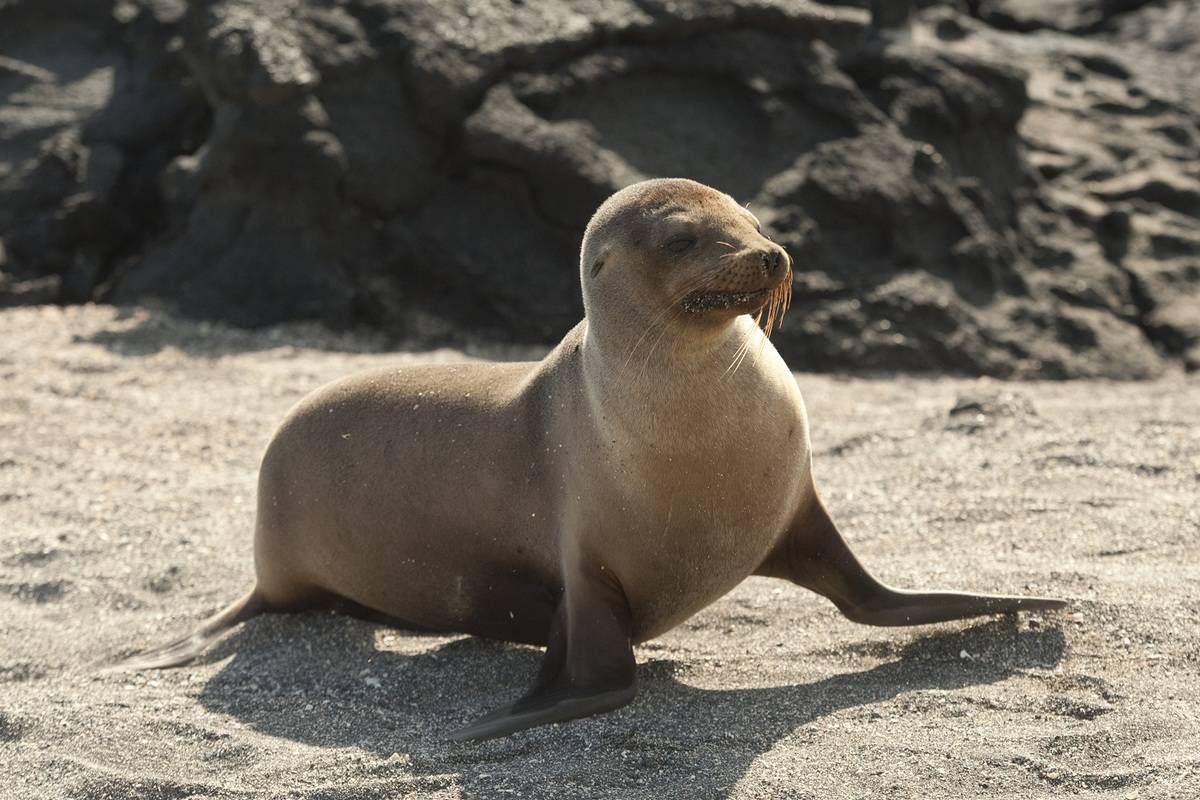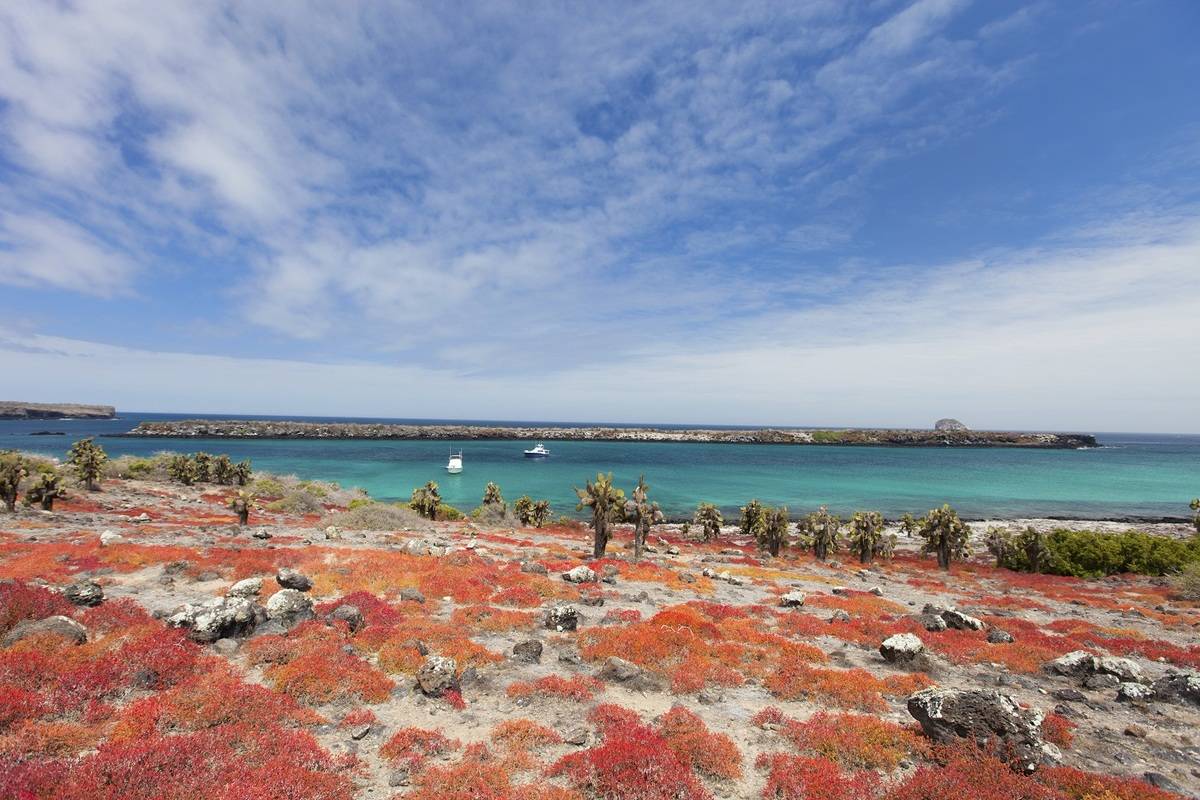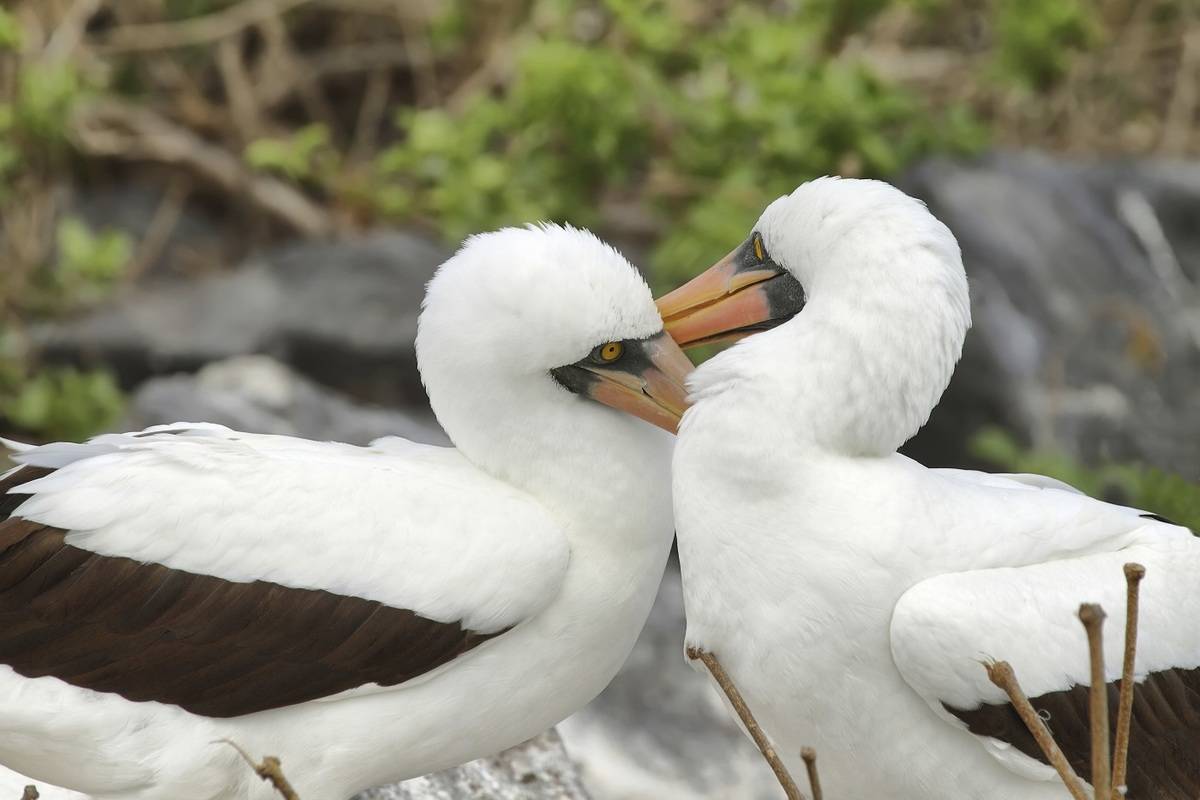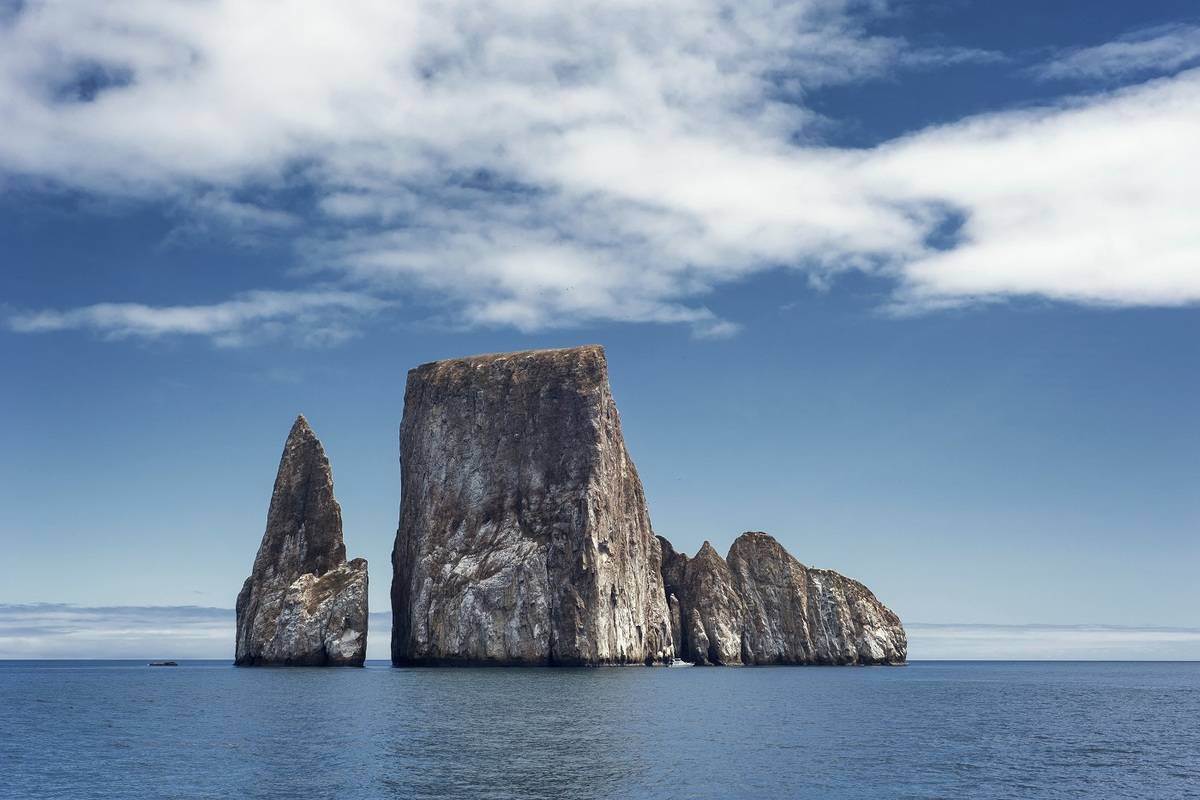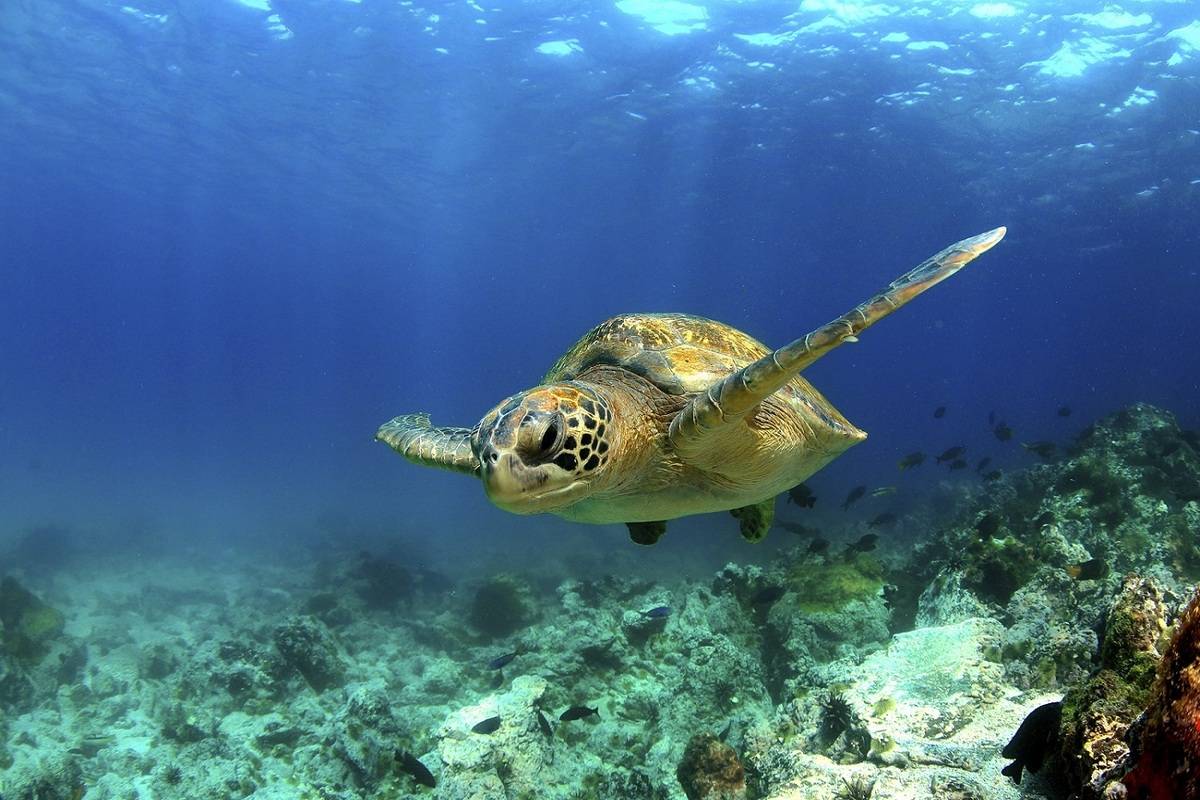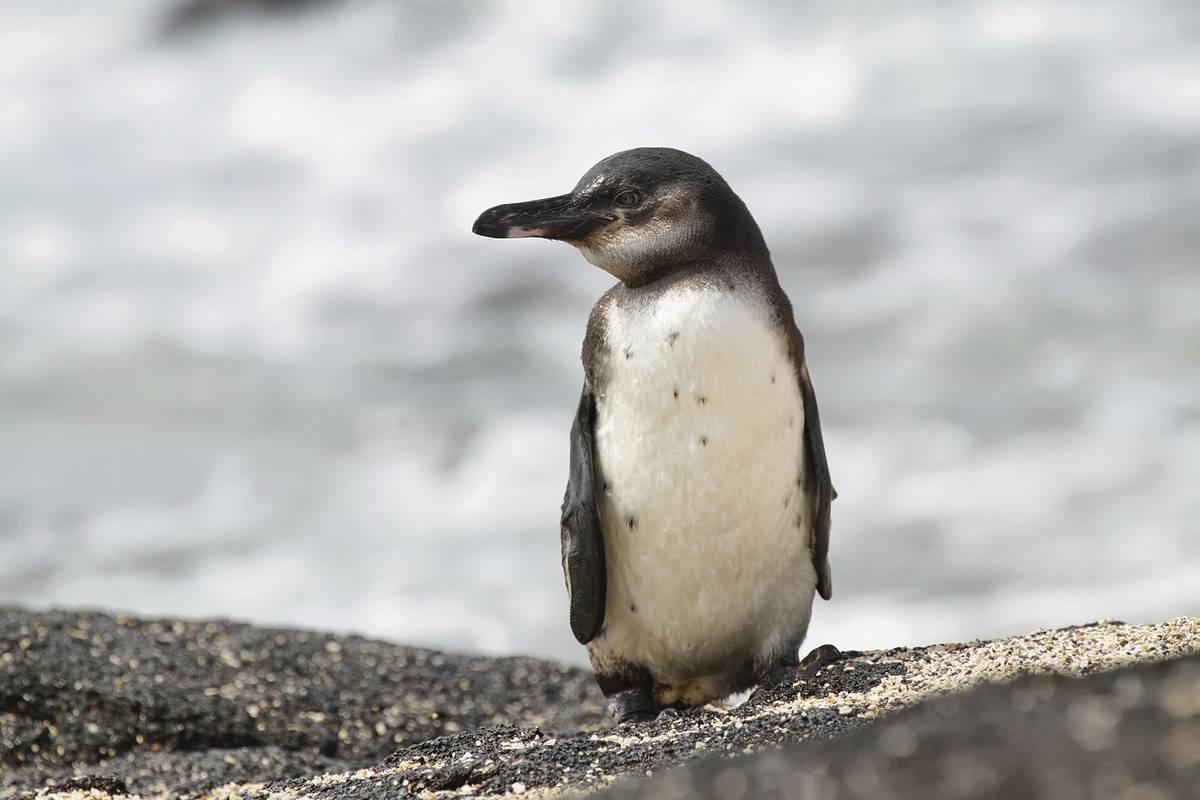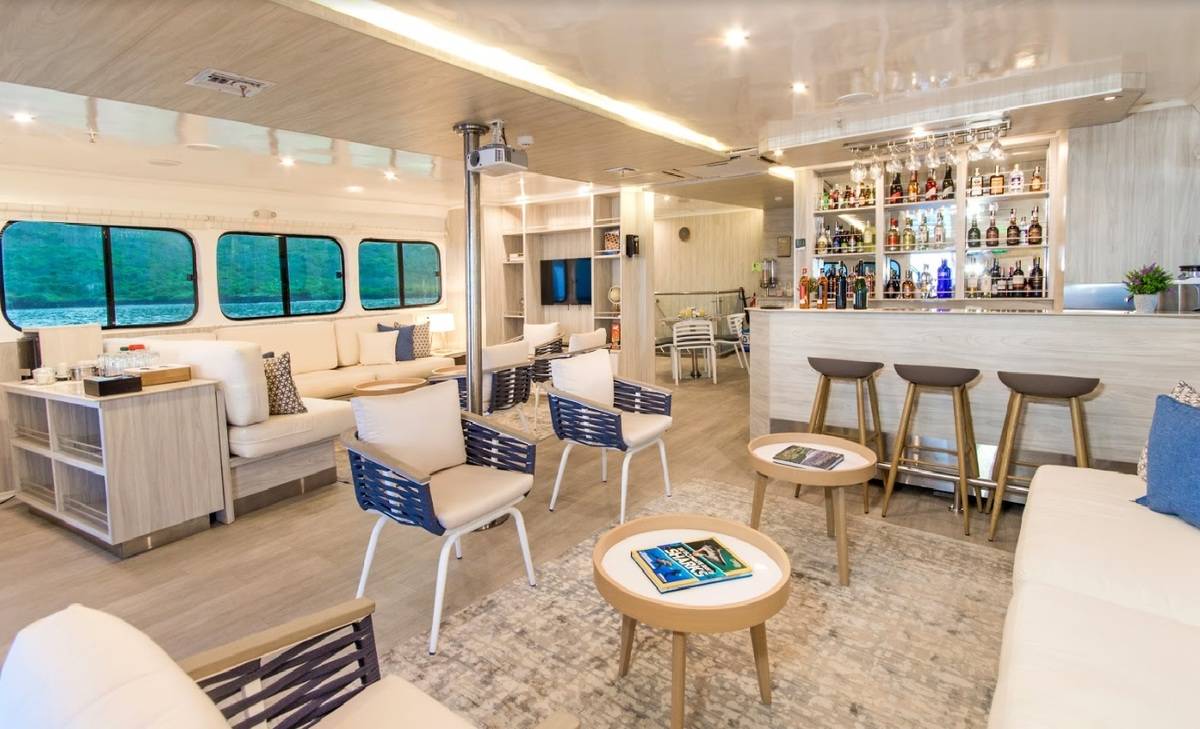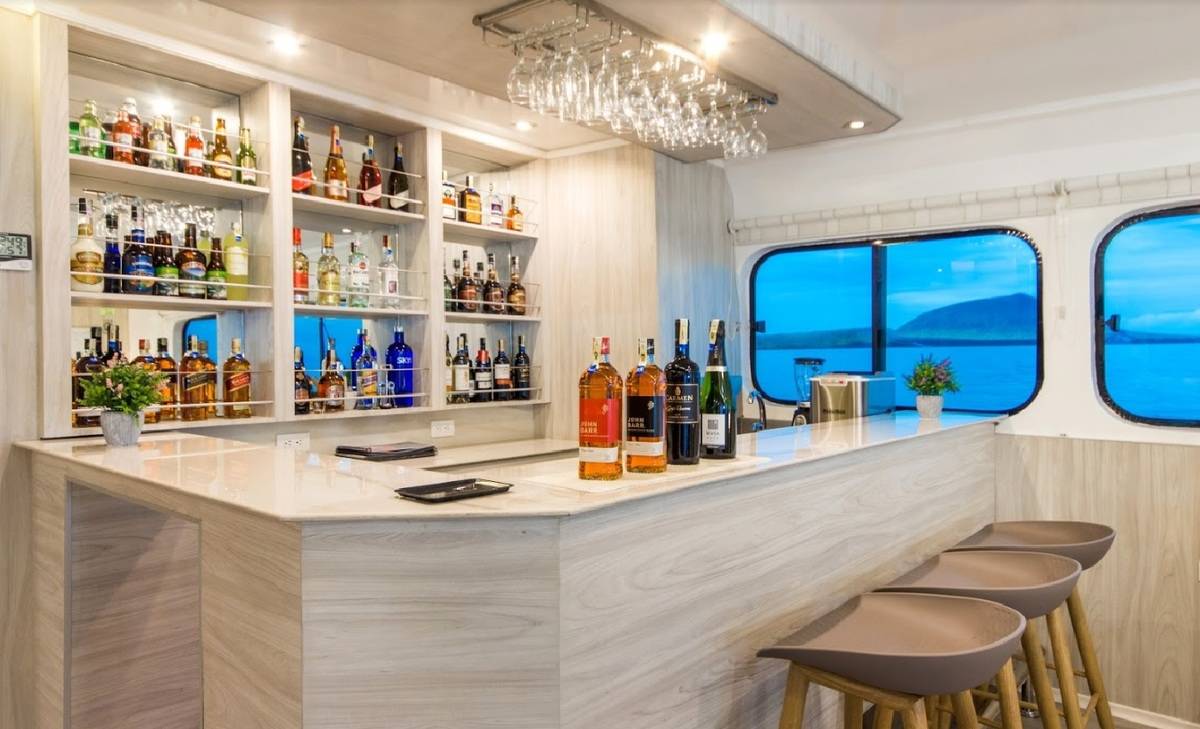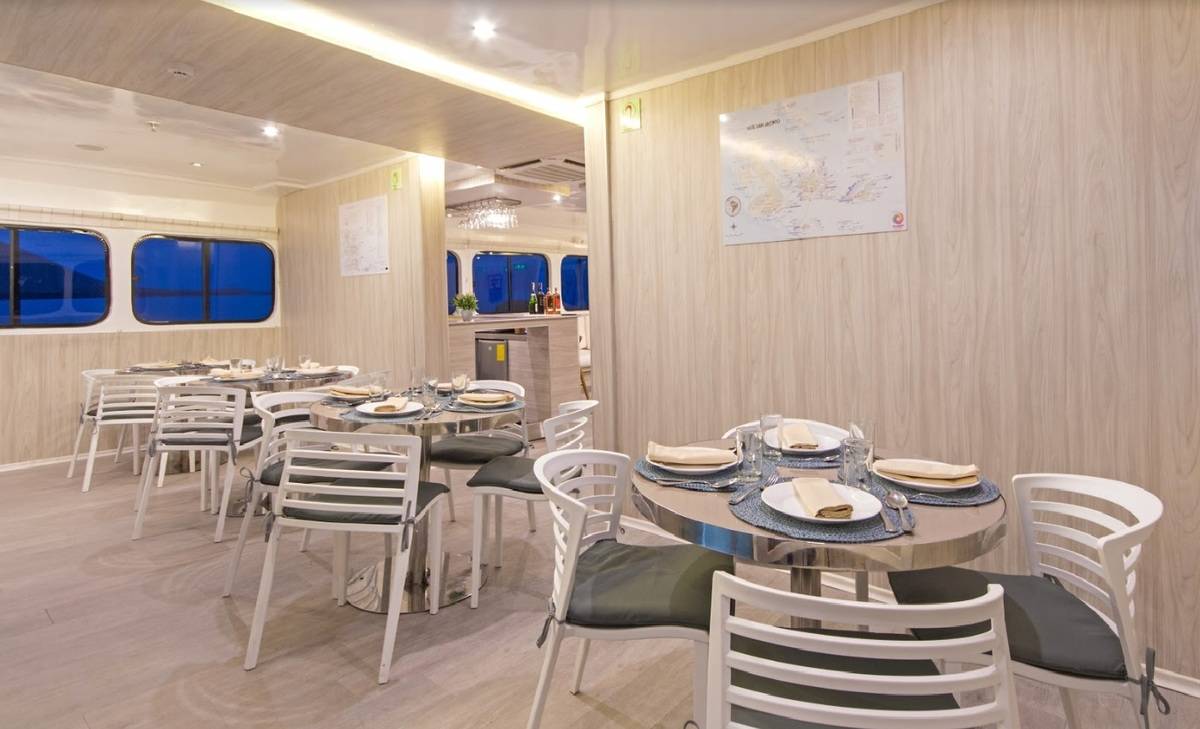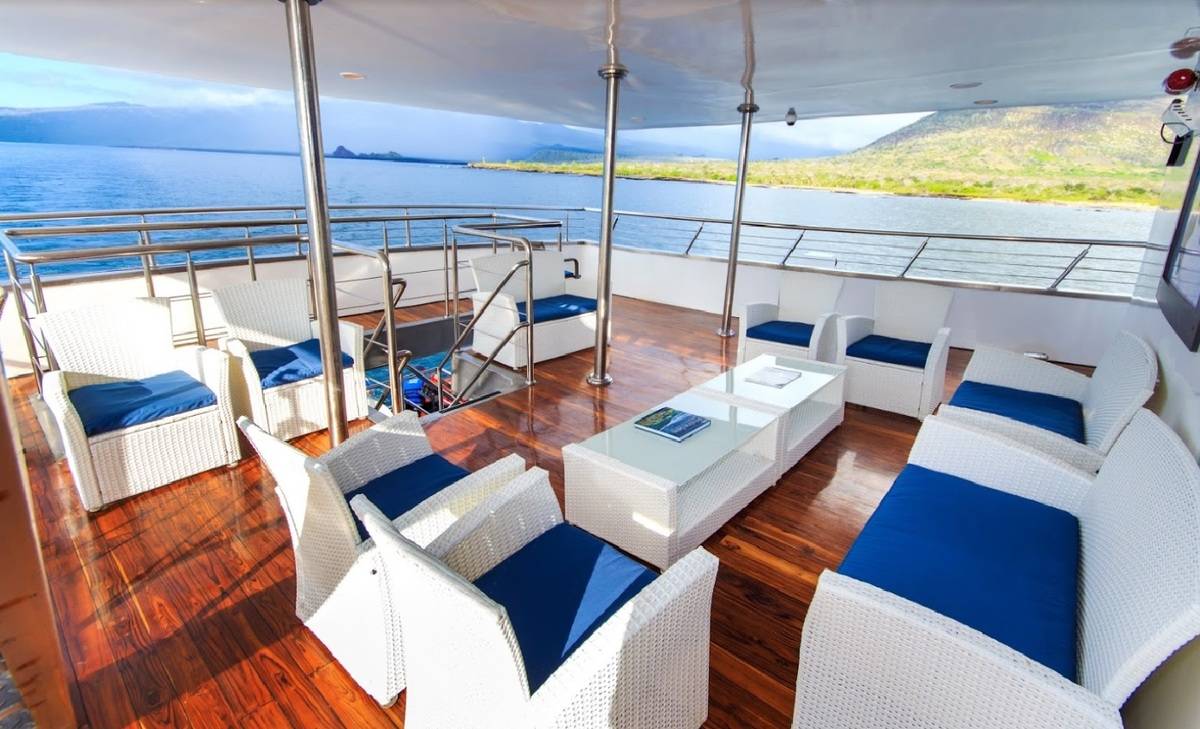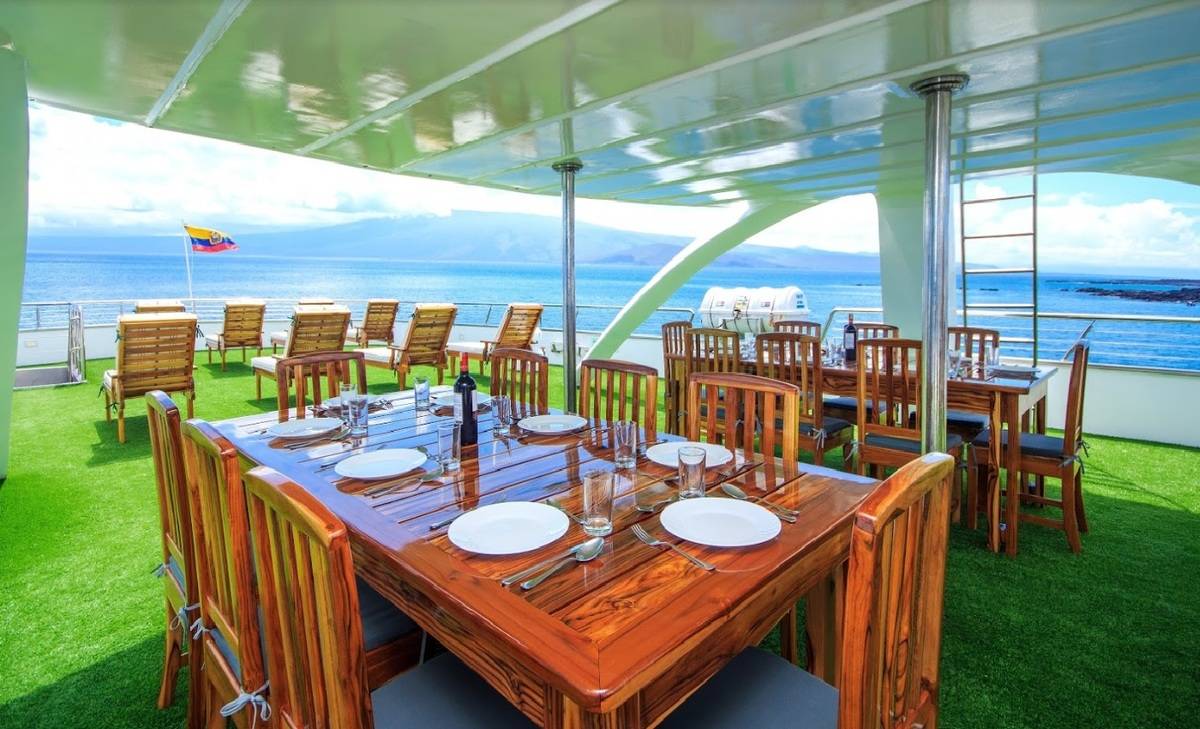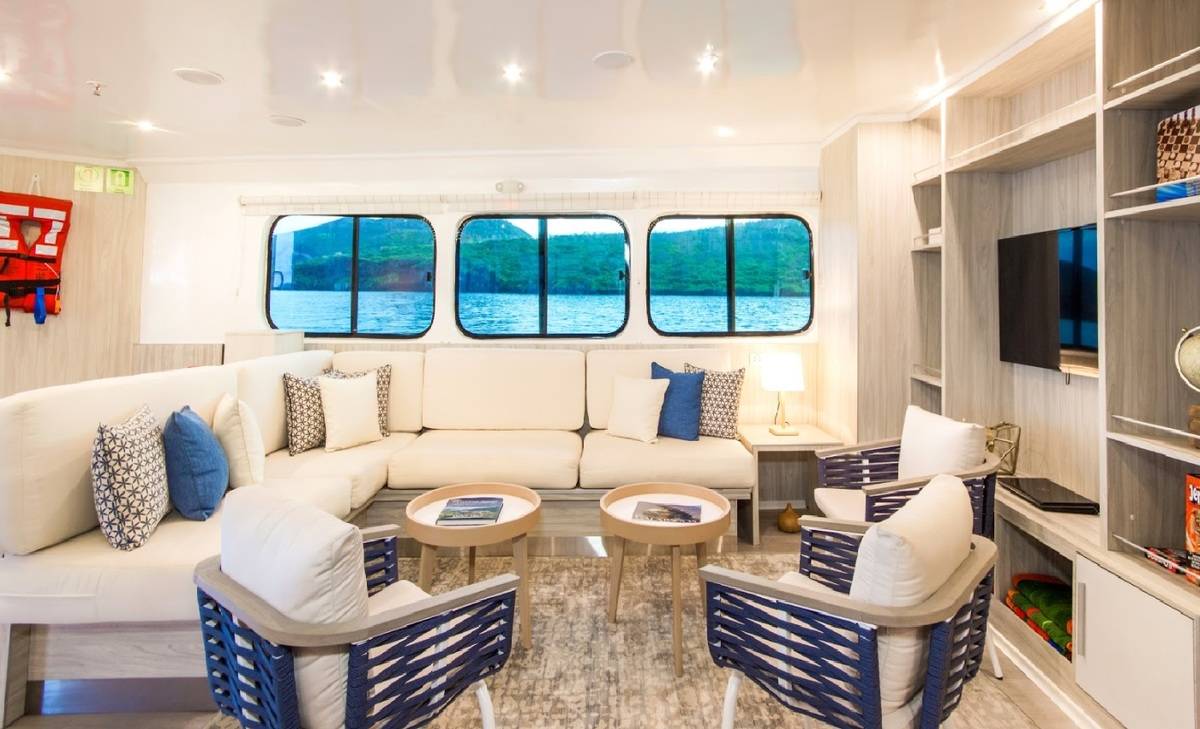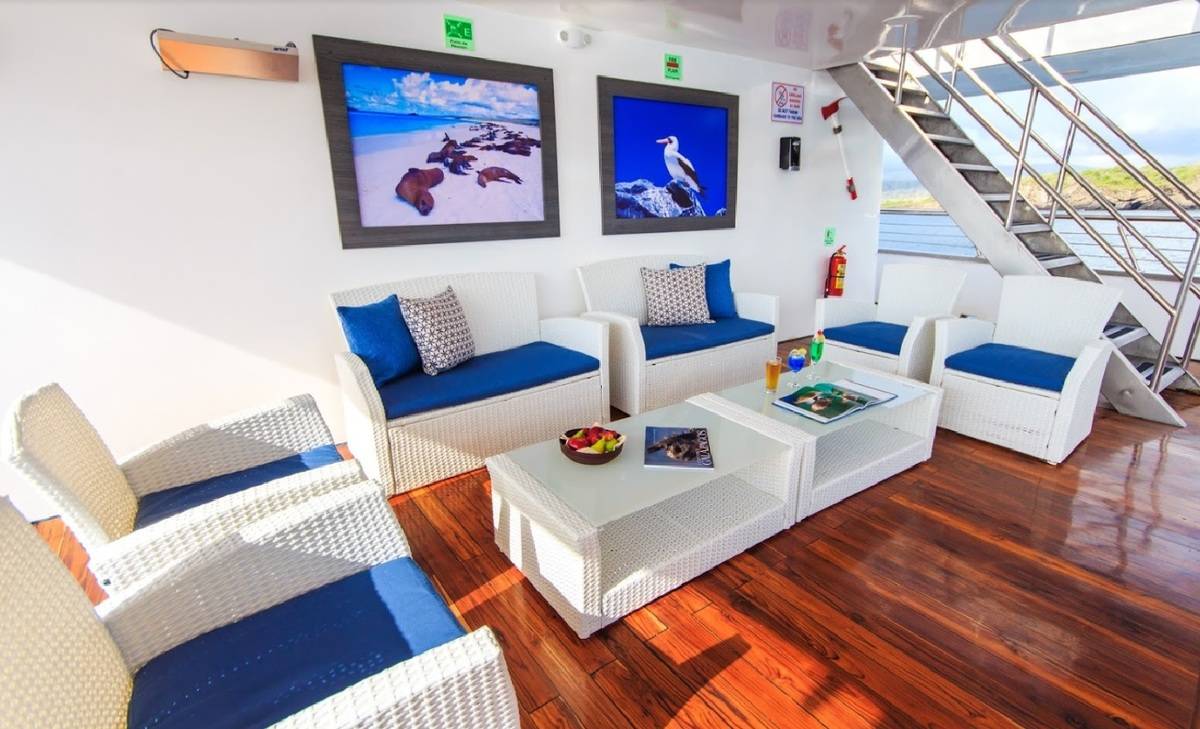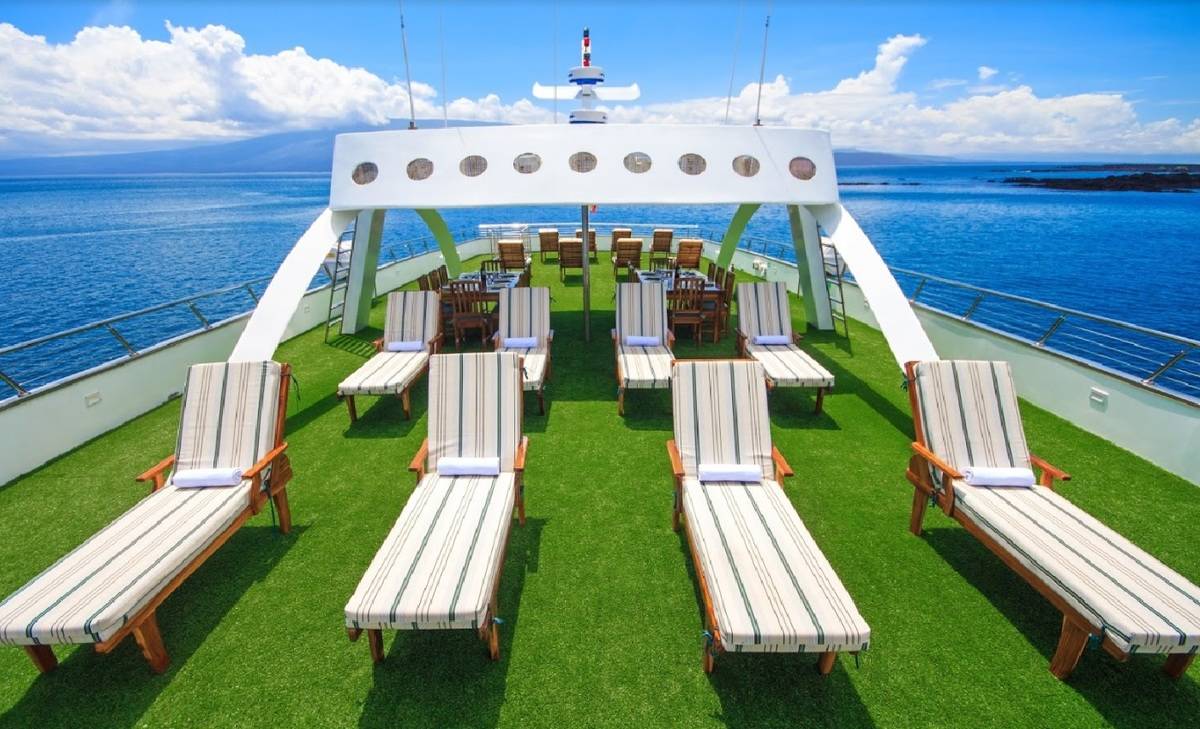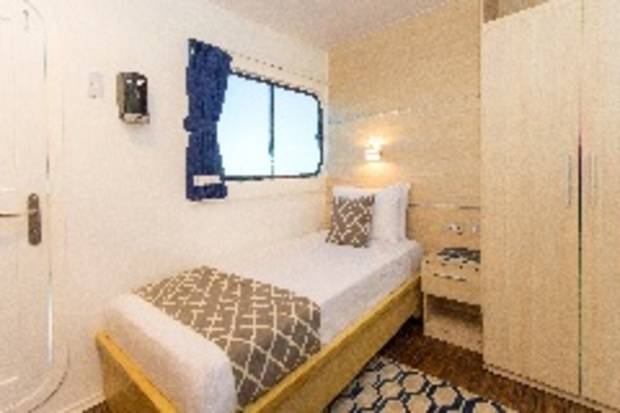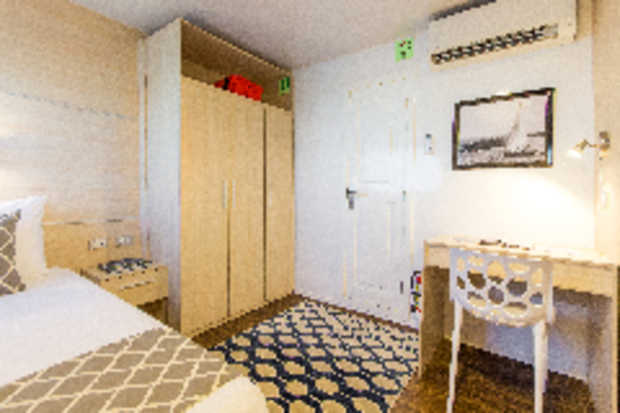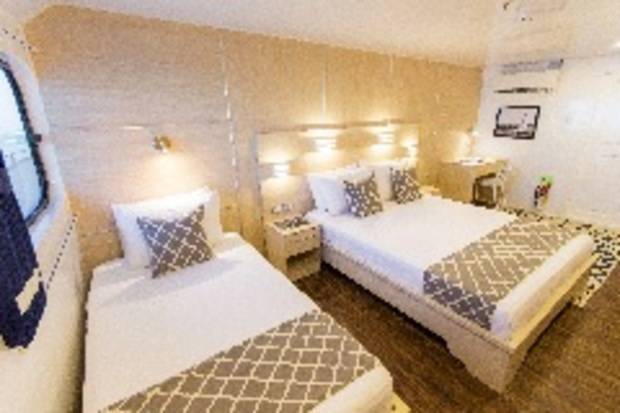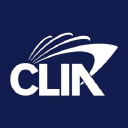Solaris: Southern, Northern and Central Islands
8 Days - M/Y Solaris
Our 8-day eastern route visits some of the most popular sites of the Galapagos and exclusive Genovesa. This varied route combines the overwhelming seabird colonies of Genovesa and Española with the highly appreciated South Plaza.

Home » 8 Day Solaris: Southern, Northern and Central Islands
Itinerary Highlights:
- Visit the sea lion colony on the white sand beaches of Mosquera
- Spot frigate birds and red-footed boobies nesting in the mangroves of Darwin Bay
- Enjoy a guided walk on South Plaza, the best place to encounter the endemic Galapagos land iguanas
- Stop by Kicker Rock, a huge offshore block of rock which reaches around 150m above sea level
- Learn about the origins of the Galapagos at the Interpretation Centre on San Cristobal
Itinerary in Brief:
- Day 1: Embark aboard the Solaris yacht & Mosquera
- Day 2: Darwin Bay & Prince Phillip's Steps
- Day 3: Plazas & Santa Fe
- Day 4: Kicker Rock & Interpretation Centre
- Day 5: Gardner Bay & Punta Suarez
- Day 6: Punta Cormorant, Champion Islet & Post Office Bay
- Day 7: Sullivan Bay & Bartolome
- Day 8: Black Turtle Cove - transfer to Baltra Airport
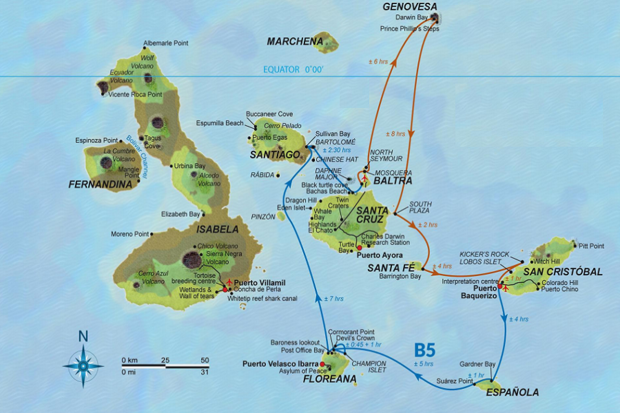
Day 1: Arrival at Baltra Airport & Embark on the Solaris
AM: Arrival at Baltra Airport
Upon arrival at Baltra Airport, you will first pass through an airport inspection point where your TCT (Transit Control Card) will be checked and stamped (please keep this carefully with your passport as you will need to show it again when you leave Galapagos). Here you will also pay the Galapagos National Park entrance fee of USD 100 (unless it has been prepaid). To ensure that no foreign plants or animals are introduced to the islands, your luggage will be inspected as well. At the arrival hall a naturalist guide will meet you and escort you on a short bus ride to the harbor at Baltra. By dinghy you will be taken to the yacht.
PM: Mosquera
Mosquera Islet is located between Baltra and North Seymour. This is a small islet formed by a geological uplift, with a reef of rocks and coral and a great white sand beach, where a population of sea lions can be found. You can also observe several species of shorebirds. Along the rocks are commonly running Red Lava crabs or Sally light-foot crabs.
Day 2: Darwin Bay & Prince Phillip's Steps
AM: Darwin Bay (Genovesa)
This bay has origin when the crater of this island collapsed below sea level. The wet landing is on a beautiful white coral sandy beach. This is a favorite island for birdwatchers: red footed-boobies, masked boobies, wandering tattlers, lava gulls, whimbrels Yellow-crowned, black-crowned and lava herons, and yellow warblers can be seen in the area.
Continuing on the trail, visitors climb gradually to the edge of the cliff seeing Red-Foots nesting in the Mangrove trees below. Bird watching includes sightings of Sharp-Beaked Finches, Large Cactus and Ground Finches, Galapagos Doves and Swallow-Tailed Gulls. Reaching the end the trail at the cliff's edge offers an incredible view of the island and the many birds living there.
PM: Prince Philip’s Steps (Genovesa)
El Barranco is located at the southern part of Darwin Bay and it is also known as Prince Philip’s Steps. Passengers will climb to a plateau that is part of the stretch of land that surrounds Darwin Bay on its eastern side. There is a big population of Masked boobies and Red-Footed boobies in the trees; Storm petrels and Short-eared Owls have found the ideal place for nesting in the lava flows.
Day 3: South Plaza Island & Barrington Bay
AM: South Plazas
South Plazas is located at the east of Santa Cruz Island, and forms part of two islands known as Islas Plazas. Despite its small size, some of the most interesting and outstanding species of the Galapagos are found here. The Plazas land iguanas are smaller than its relatives found on other islands. Throughout the island there are several hybrid iguanas, a result of crossing a male marine iguana and a female land iguana, they are unique, recognizable at first glance by their black/gray color, with a land iguana's crest, but face and tail of the marine iguana. The big population of iguanas is due to the presence of tunas, their favorite food. Swallow Tailed Gulls nesting in the rugged cliffs are seen along with other sea birds as: Audubon shearwaters, red-billed tropicbirds, frigate birds and brown pelicans.
PM: Santa Fe
Located in the southeastern part of the Galapagos, this island was formed from an uplift, which explains why it is mostly flat. There are some theories which assure this could be the oldest island in the Archipelago. Santa Fe is the home of a number of endemic species like the Galapagos Hawk, Galapagos snake, Galapagos mockingbird, rice rats and one of the two species of lands Iguanas of the islands. After disembarkation in the beautiful and clear waters you will be in contact with one of the many sea lion colonies. Along the trail many salt bushes can be seen as well as giant prickly pear cactus. There are great possibilities of snorkeling with playful sea lions and tropical fishes.
Day 4: Kicker Rock & Interpretation Centre
AM: Kicker Rock (San Cristobal)
This huge ‘cathedral’ of rock is an old lava cone, now split in two. On the rocks many blue footed boobies, Nazca boobies and frigate birds are to be found. The snorkeling is great here, with good opportunities for seeing sea turtles, spotted eagle rays, tropical fish and the Galapagos shark.
PM: Interpretation Centre (San Cristobal)
The Galapagos National Park Visitor Centre lies close to the port town of Puerto Baquerizo Moreno. The centre explains a series of natural circumstances such as the volcanic origins of the islands, their remoteness from the continent, its ocean currents, its special climate, the arrival of different species, and their establishment, among others.
Day 5: Gardner Bay & Punta Suarez
AM: Gardner Bay (Española)
Located on the north-eastern coast of Hood, Gardner Bay provides an excellent beach for relaxing, swimming and snorkeling, and the opportunity to observe sea lions. Here you may also observe sharks in the crystal clear ocean waters.
PM: Punta Suarez (Española)
This rocky land spot sustains one of the most impressive and varied colonies of sea birds in the Galapagos. Along its southern shore, high cliffs rise up from the sea affording the visitor spectacular views of soaring birds and of the blow whole where water spouts up to 50-75 feet into the air according to the intensity of the surf.
Day 6: Post Office Bay, Punta Cormorant & Champion Islet
AM: Punta Cormorant, Champion Islet (Floreana)
This site offers probably the best Flamingo lagoon in the Galapagos; it is also one of the largest in the islands. It’s situated between two tuff lava cones that give the area a special atmosphere. There are various species of shorebirds to observe besides flamingos; the most frequent are common stilts, white-checked pintail ducks and other migratory birds. It is very interesting to see the two distinct beaches: “The Green Beach” (due to its high percentage of olivine crystals in the sand) and the “Flour Sand Beach” which is made up of coral. After our visit of Cormorant Point we will continue with our yacht to the nearby islet known as Corona del Diablo (Devil’s Crown), where we can enjoy some great snorkelling.
PM: Post Office Bay (Floreana)
Historically, Post Office Bay is the location of a wooden barrel that was placed in the 18th century by the crew of a whaling ship. Since this time it has been used by mariners and tourists as a post office. The idea is to carry letters or postcards to their destination by hand. Apart from being the Post Office Barrel, this site was the landing area for some of the first colonists. We will continue to the north of the island and ascend to an elevated slope to enjoy a beautiful view from the Baroness Lookout. It is said that Baroness Eloisa von Wagner loved this place and spent several hours watching the horizon. Within walking distance (30 m) are the ruins of what is known as her House. From this lookout, the landscape covers the coastline from the Enderby islet to Post Office Bay, as well as Cerro Pajas, the pool of flamingos and wide forest of Palo Santo.
Day 7: Sullivan Bay & Bartolome
AM: Sullivan Bay (Santiago)
Santiago, also called James, or San Salvador Island, is located in the west central part of the Galapagos archipelago. It is the fourth largest island in the archipelago (following Isabela, Fernandina and Santa Cruz). Along with some of the large western volcanoes of Isabela and Fernandina, Santiago is also volcanically active, with many young flows and cones to be seen, particularly along the south, west, and east coasts. These may even be seen from the summit of Darwin Volcano and from space. A number of historic eruptions have been reported over the last 2 centuries. Santiago actually consists of two coalesced volcanoes: a typical shield volcano on the northwest end and a low, linear fissure volcano at the southeast end.
PM: Bartolome
Bartolome Island is situated across Sullivan Bay. It has an altitude of 114 meters, from where we can observe one of the most beautiful sceneries of the Galapagos Islands such as: Volcanic cones, lunar-like craters, lava fields, and the famous Toba formed pinnacle eroded by the sea. There is very little vegetation on this island. It has two breathtaking beaches where marine turtles exist and at the base of the pinnacle, as well as a very small colony of Galapagos penguins.
Day 8: Black Turtle Cove & Disembarkment
AM: Black Turtle Cove (Santa Cruz)
This little cove is located at the northern side of Santa Cruz Island, this is a red mangrove lagoon very calm and quiet which makes it an ideal place as nursery for many sharks and rays. Its crystal waters permits to observe large groups of white-tip reef, black tipped reef and hammer heads sharks, schools of golden rays and spotted eagle rays. There are no landing sites so the visit is done by zodiac. Sea turtles are frequently seen and sometimes they are seen mating in the mangrove-lined waters. Pelicans and Herons are also seen in this area.
Transfer to Baltra airport for your flight back to mainland Ecuador.
Cabin Details
Single Ocean View Cabin
11m², single bed, ocean view, window, private bathriom, desk, chair,
Double Ocean View Suite
21-26m², queen bed, ocean view, window, private bathroom, desk, chair.
Triple Ocean View Suite
21-26m², queen bed and single bed, ocean view, window, private bathroom, desk, chair.
M/Y Solaris Deckplan
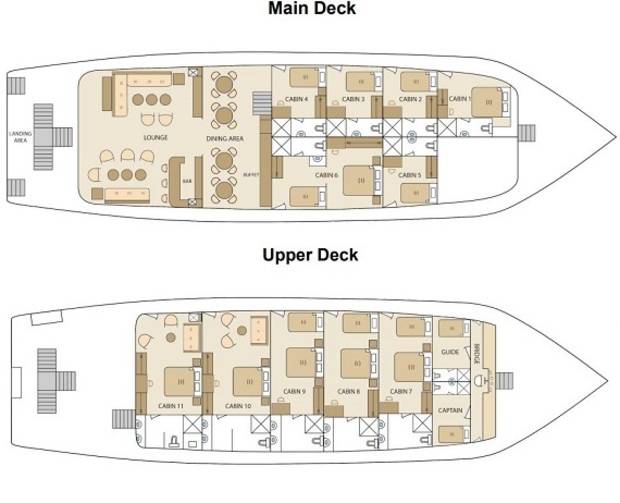
Specifications
- Comfortable monohull yacht
- Capacity: 16 passengers
- Cabins: 11
- Crew: 8
- 35 metre long/ 9metre wide
- Year built: 2018
Whats included?
- Accommodation on board
- All meals, water, tea & coffee
- All excursions as described in the programme (subject to change) with bilingual guide (Spanish / English)
- Airport assistance at Quito airport (when flight and cruise are booked together)
- All transfers to Galapagos (AirportYacht-Airport only included when booked together)
- Snorkelling equipment
- Bath and beach towels
What’s not included?
- International and National (Ecuador-Galapagos-Ecuador) flights
- Galapagos National Park Entrance, US $ 100 (To be paid upon arrival, in cash)
- Transit Control Card, US $ 20 (To be paid upon departure from the mainland to Galapagos, in cash)
- Galapagos Airport Transport, if the flight has not been booked together
- If necessary, single room supplement
- Optional wetsuit (to be paid in cash only)
- Soft drinks and alcoholic drinks (to be paid in cash only)
- Personal expenses, extras & gratuities
- Travel insurance

